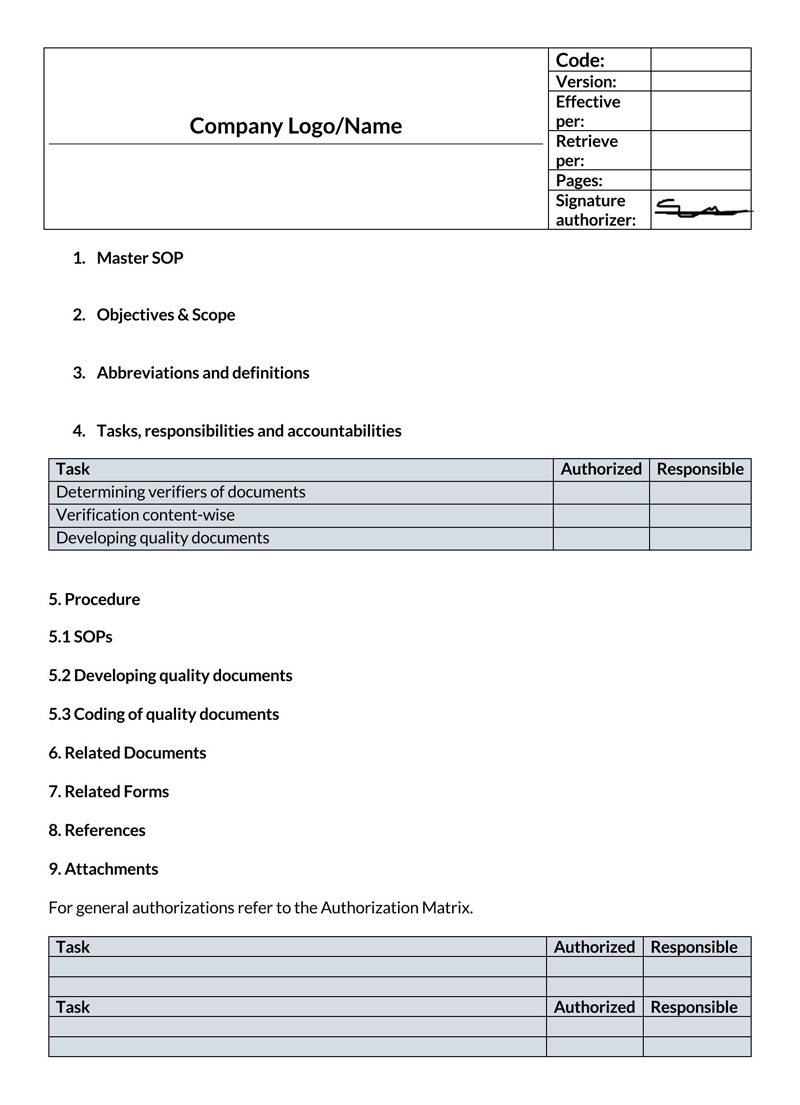A standard operating procedure (SOP) is a business document that provides a list of steps that must be taken and instructions to be followed to accomplish a specific task, they are designed to improve business efficiency, quality, and performance. Businesses use SOP templates to standardize and streamline work and production procedures.
SOPs describe the individual steps that must be completed and identify the party responsible for each task.
The policy also details the resources required to do various tasks and indicates which tools employees are expected to use. Other names for standard operating procedures include Modus Operandi (MO), set form, and standing orders. While most businesses use templates in one form or another, they are most often found in industries such as manufacturing, hospitality, food service, facilities management, and education.
Standard Operating Procedure Templates
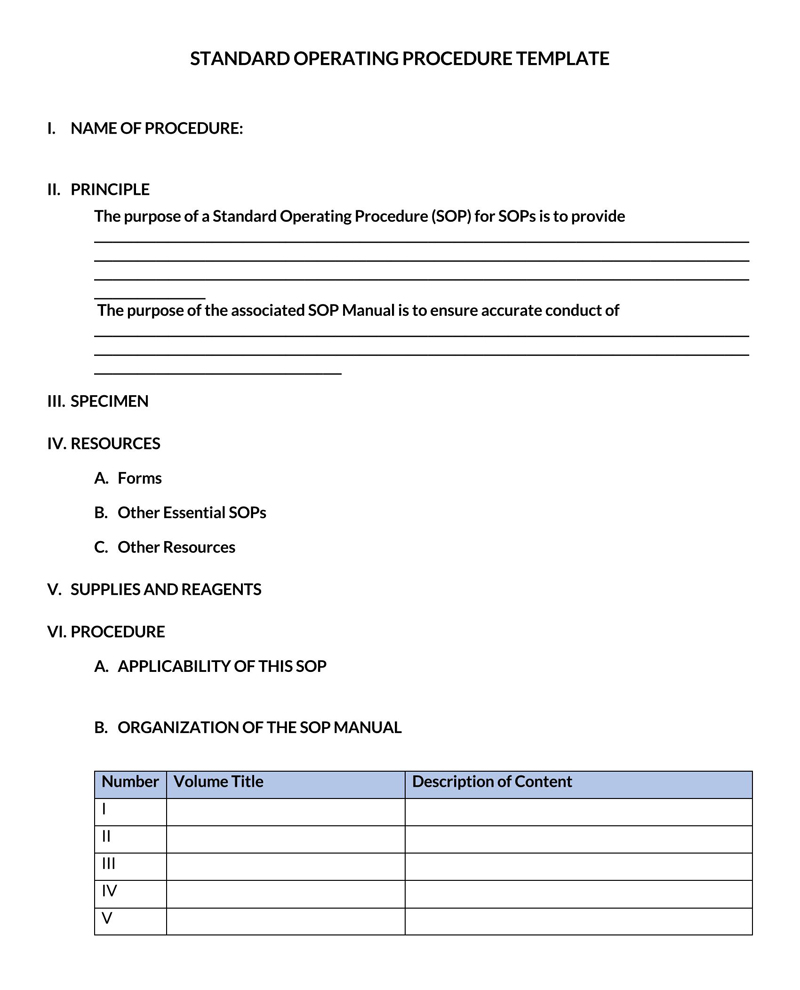
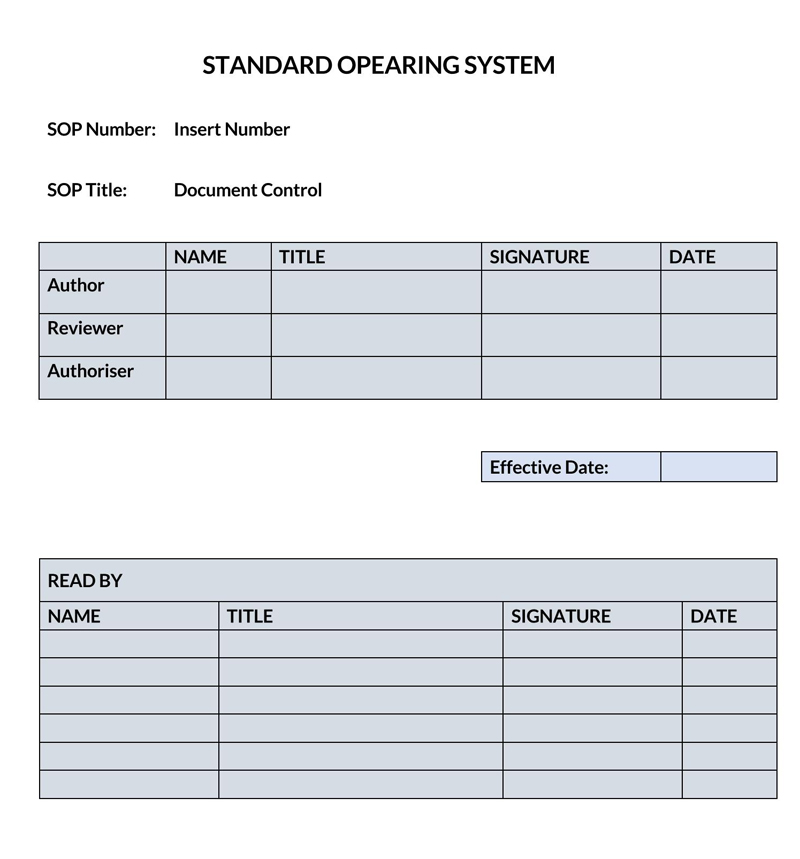
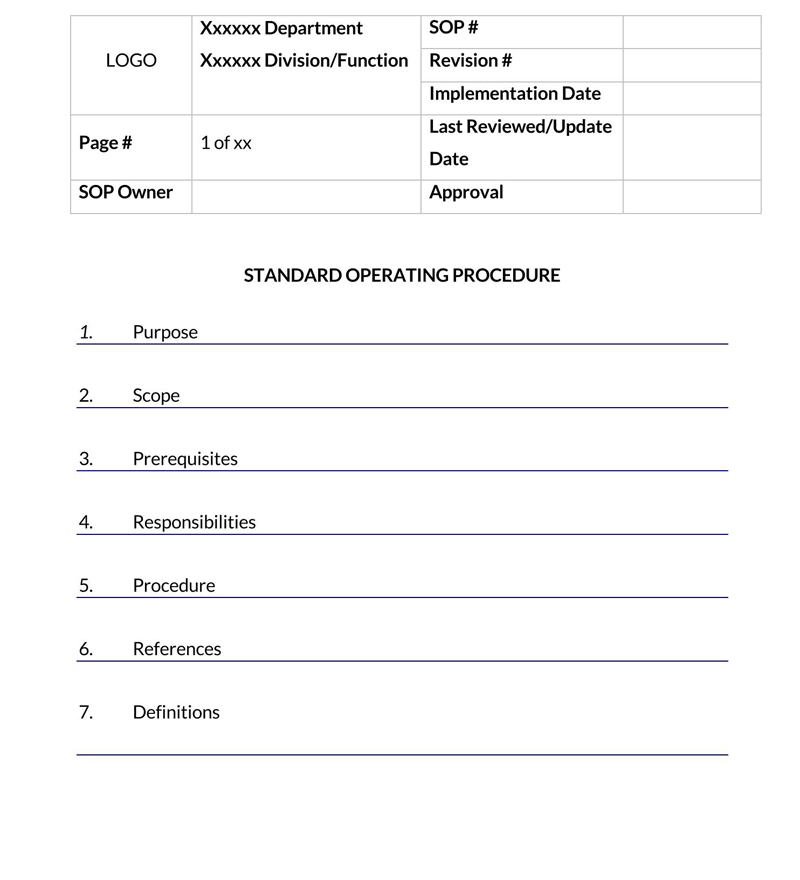
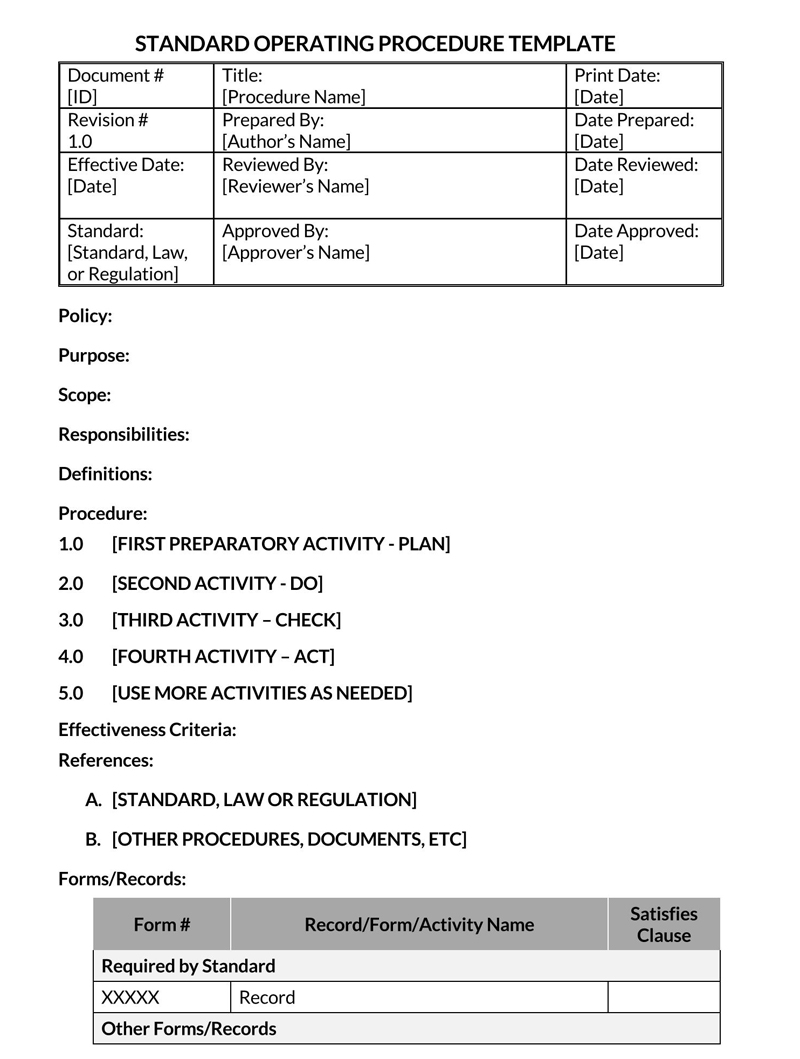
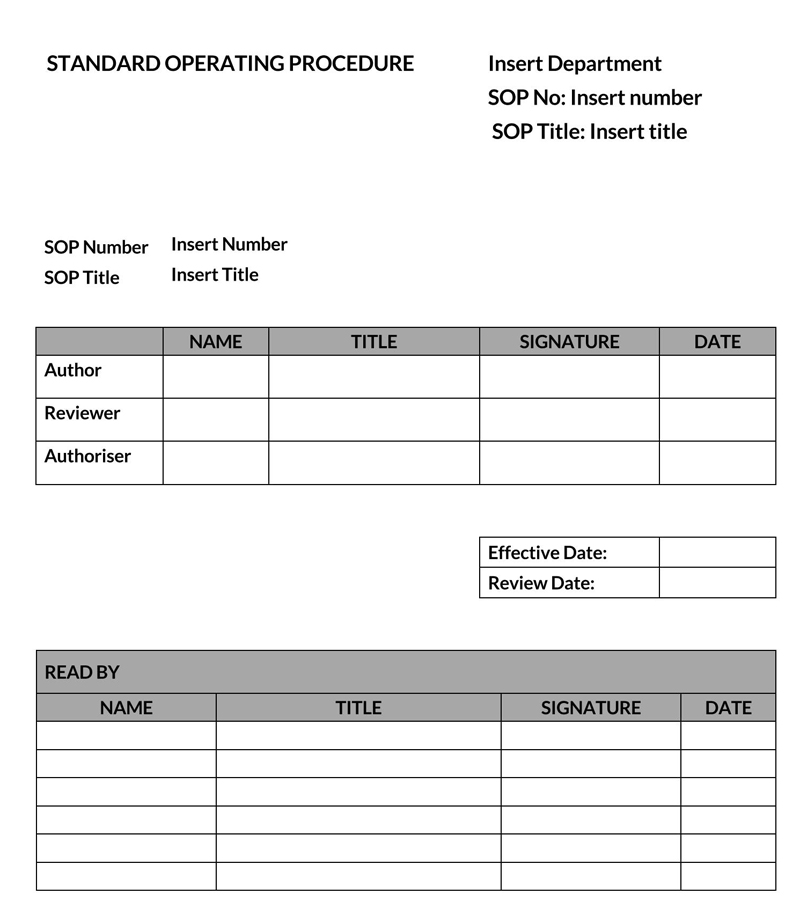
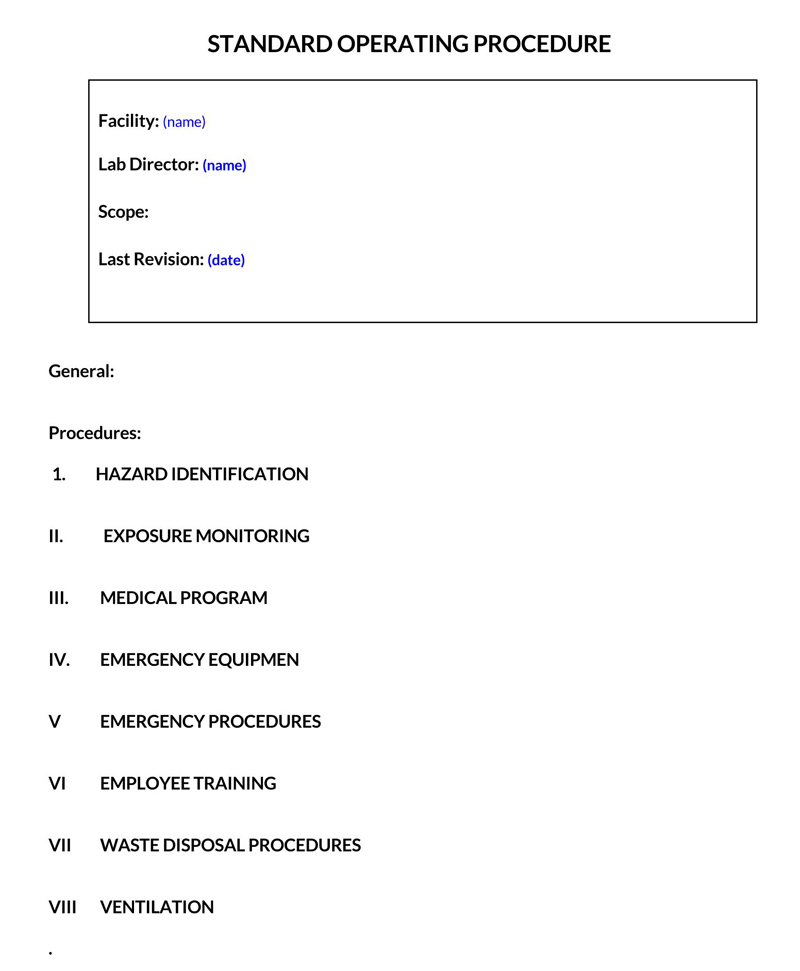
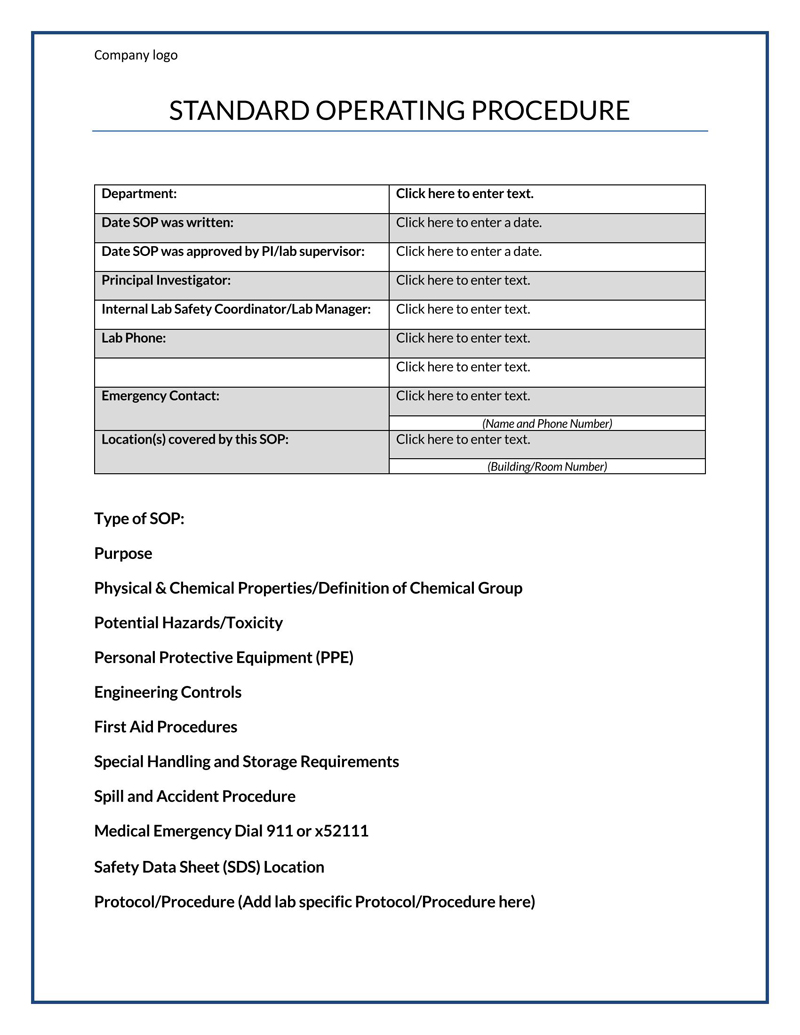
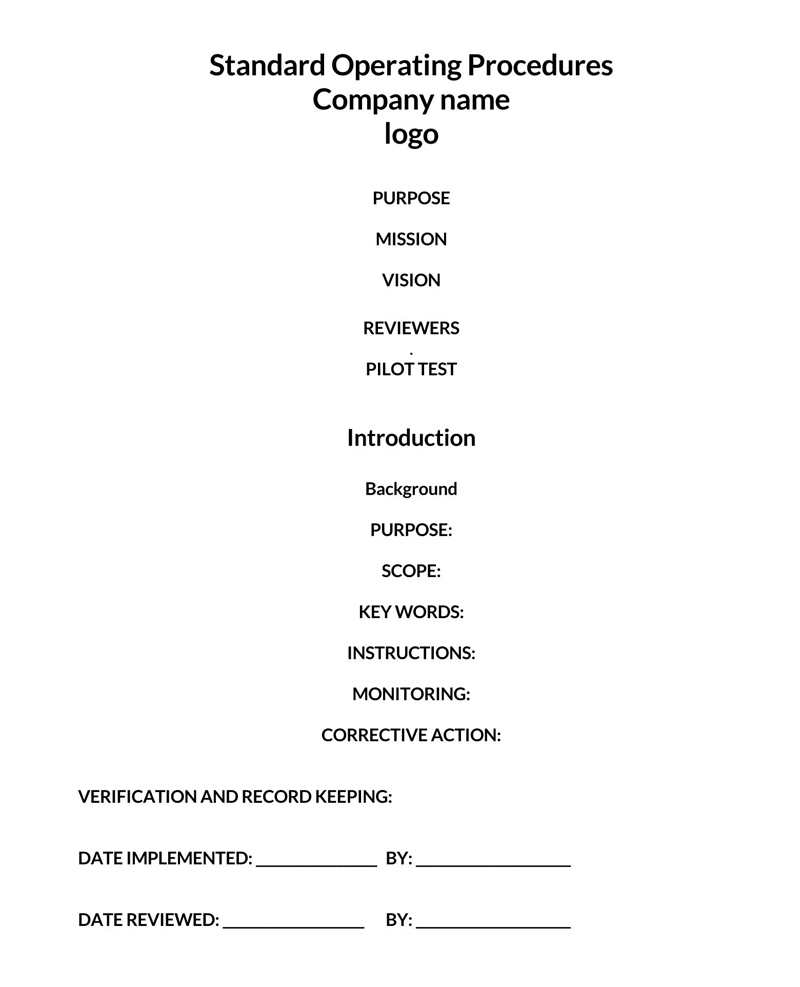
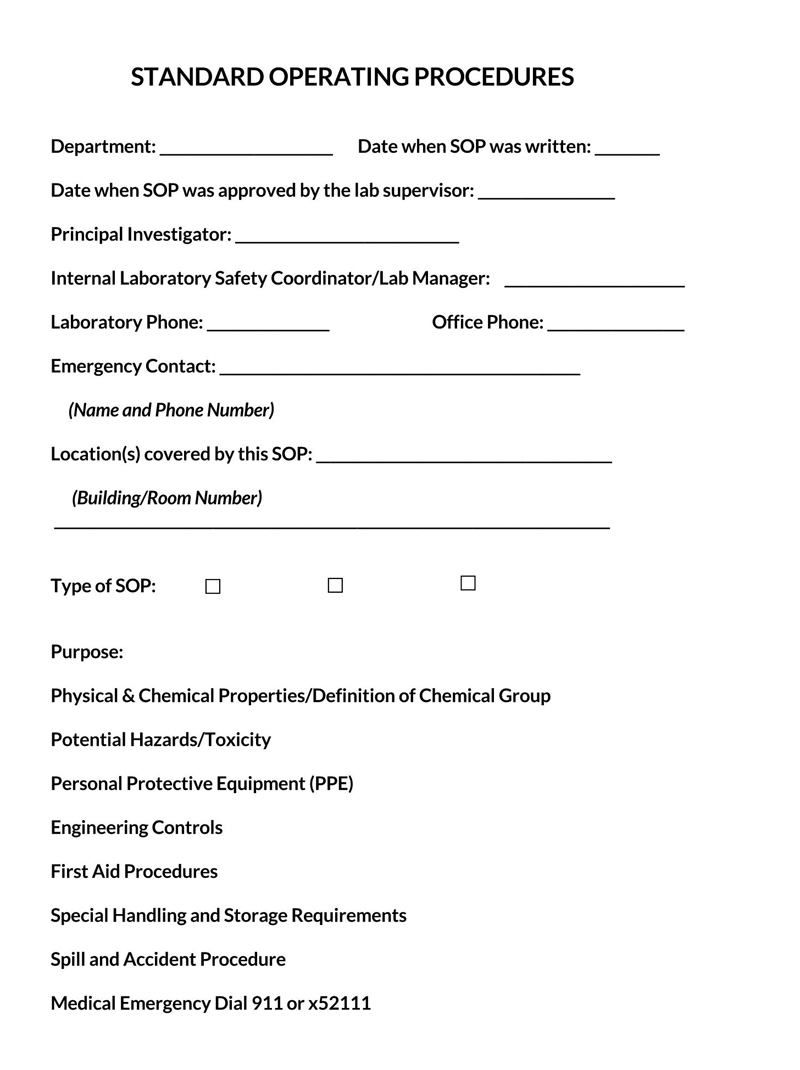
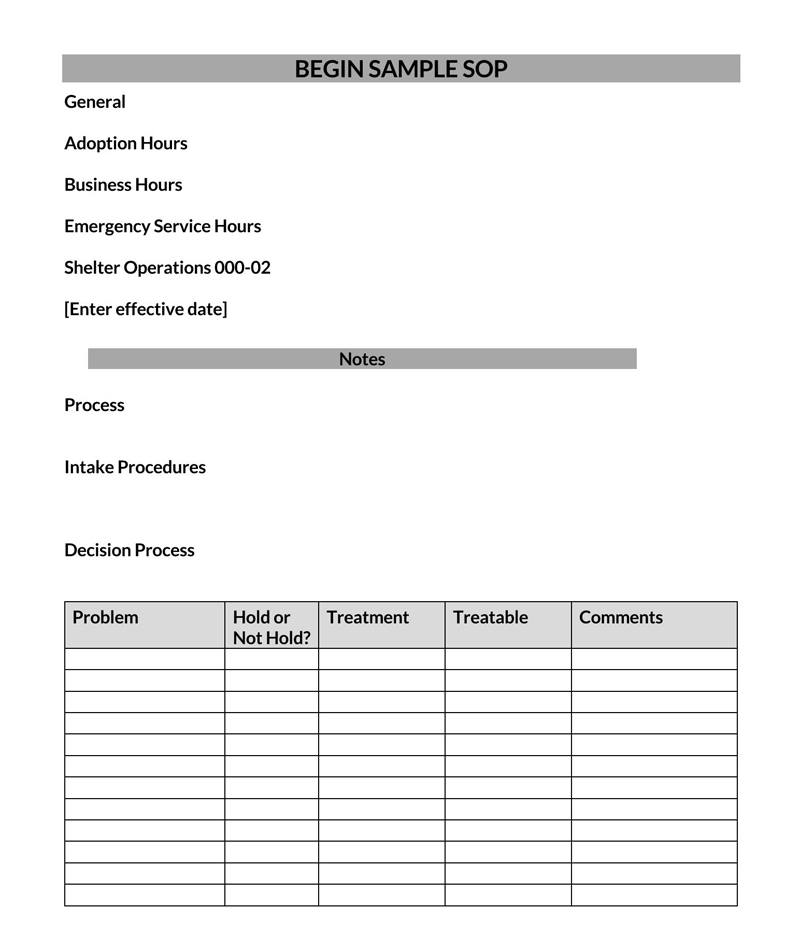
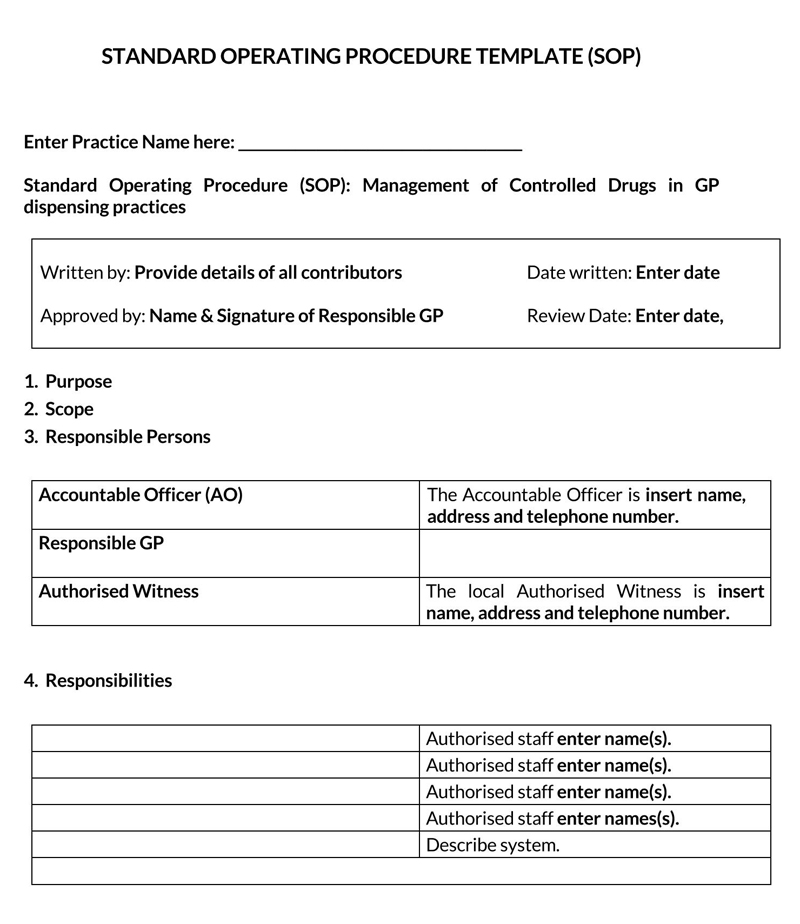
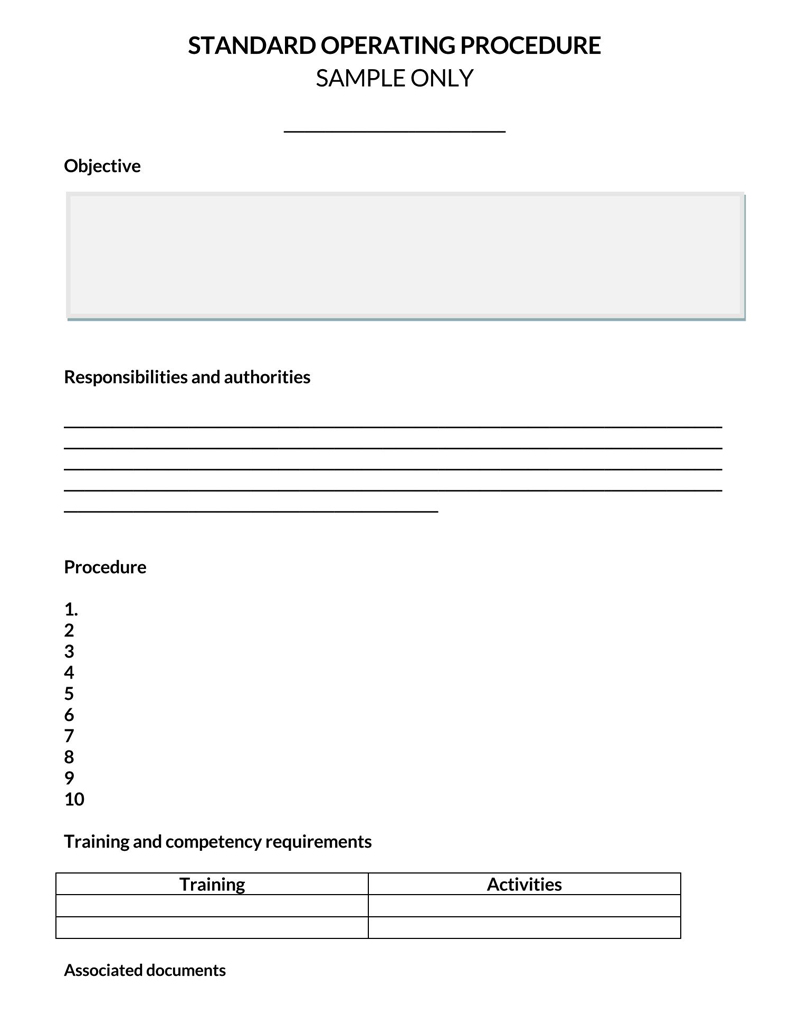
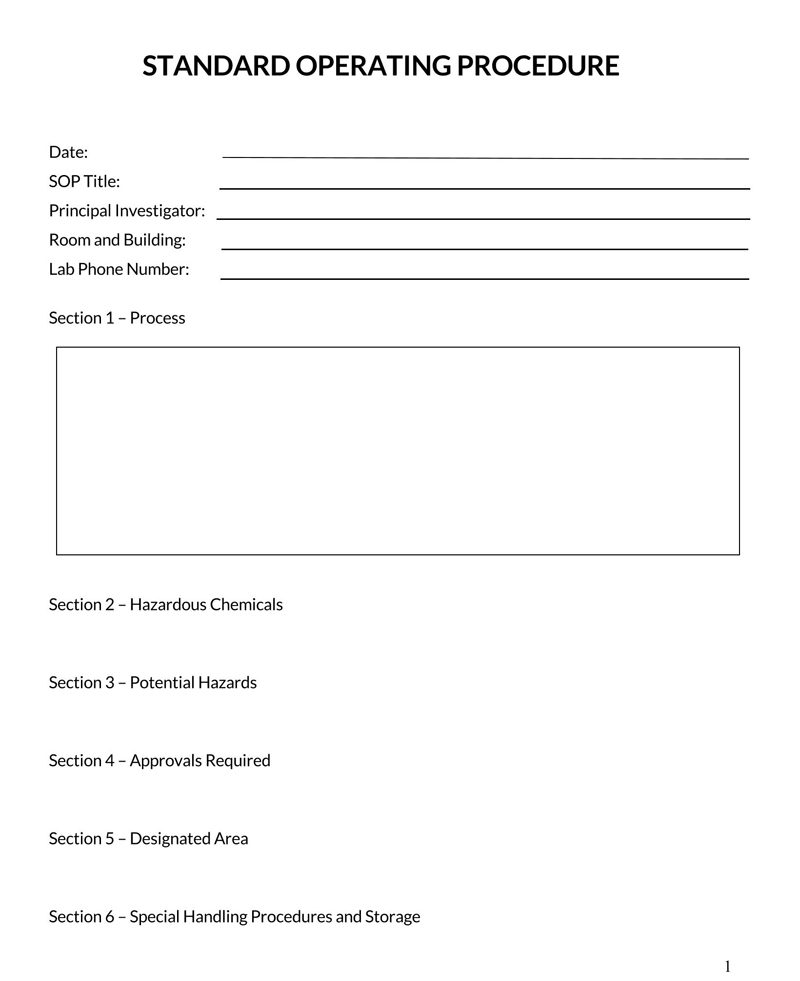
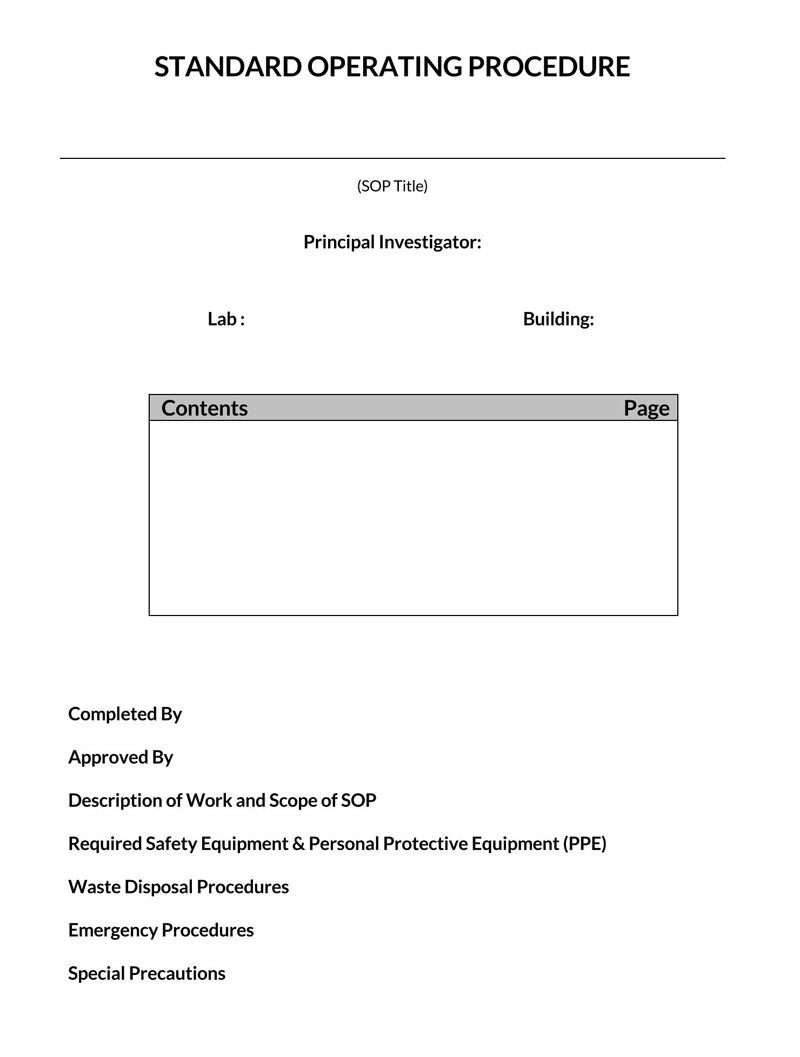
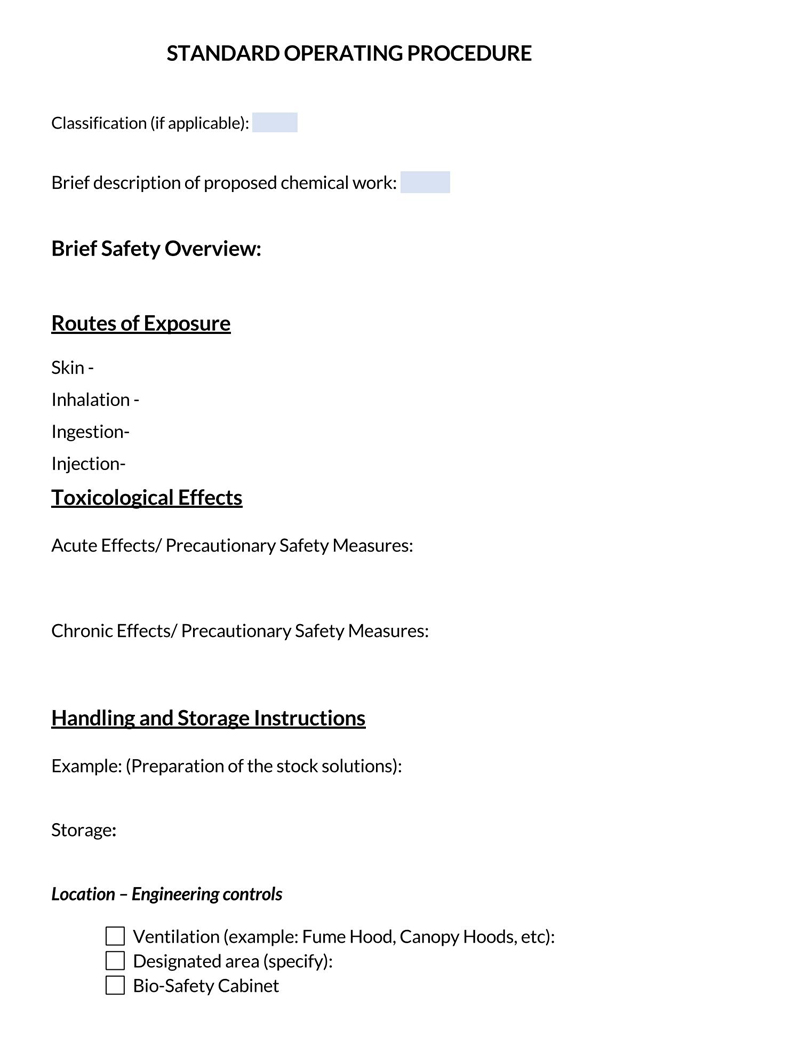
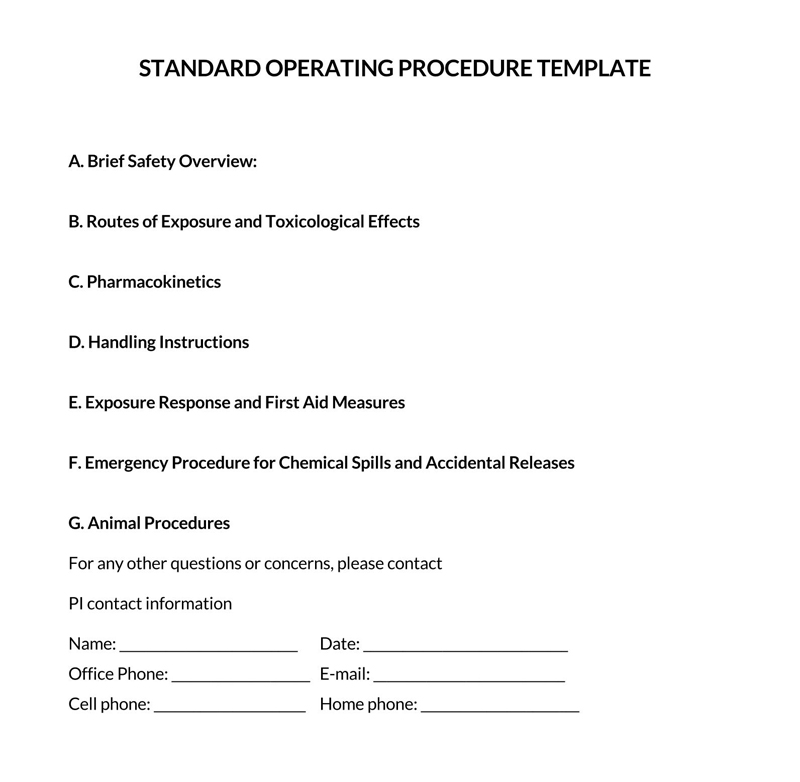
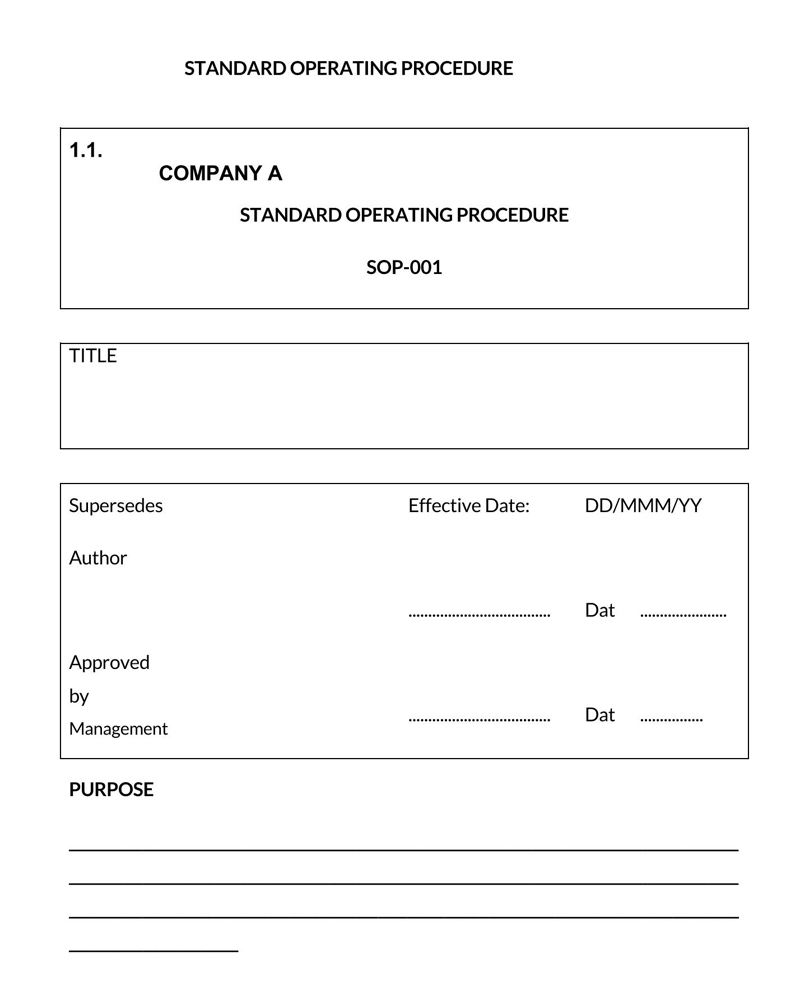
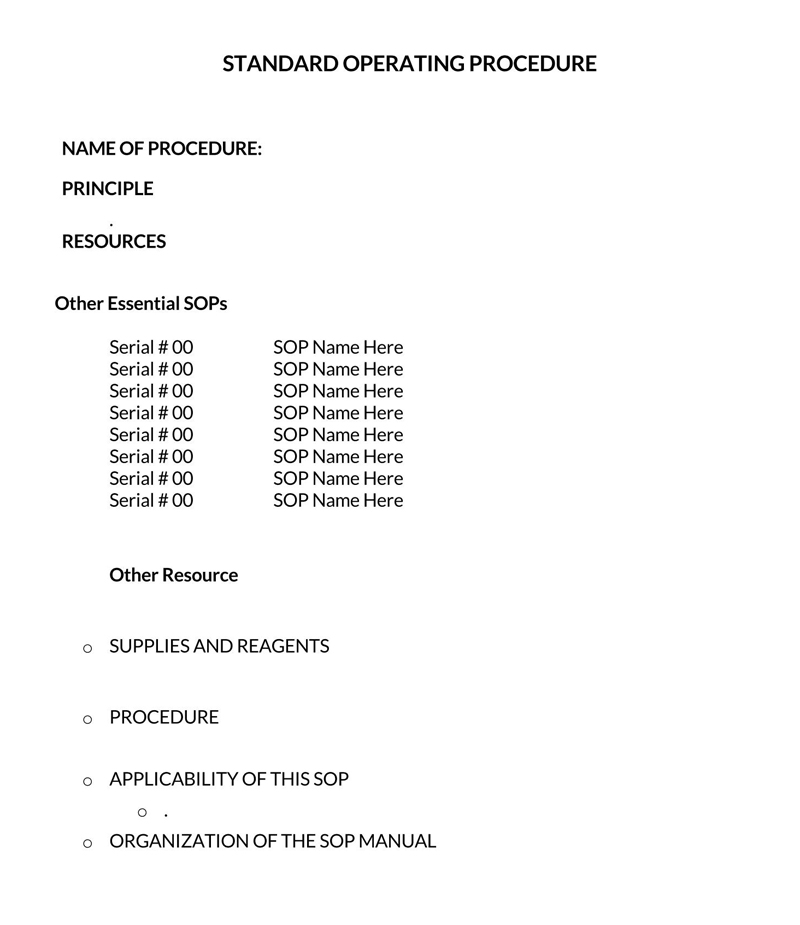
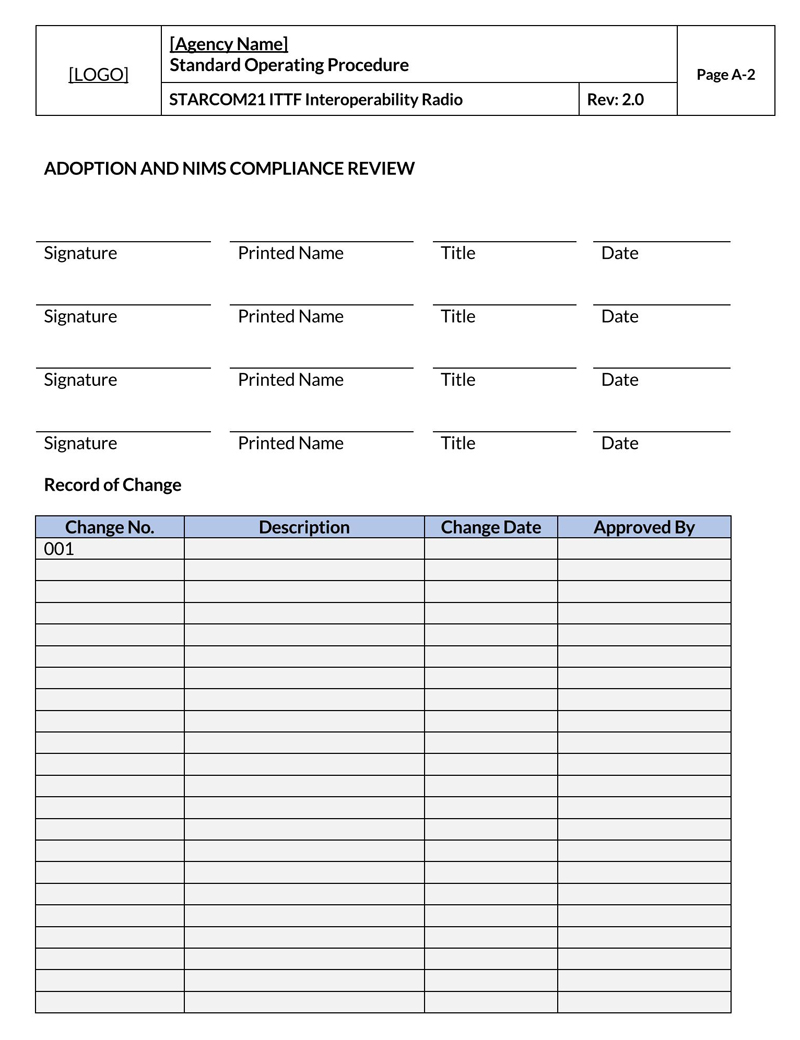
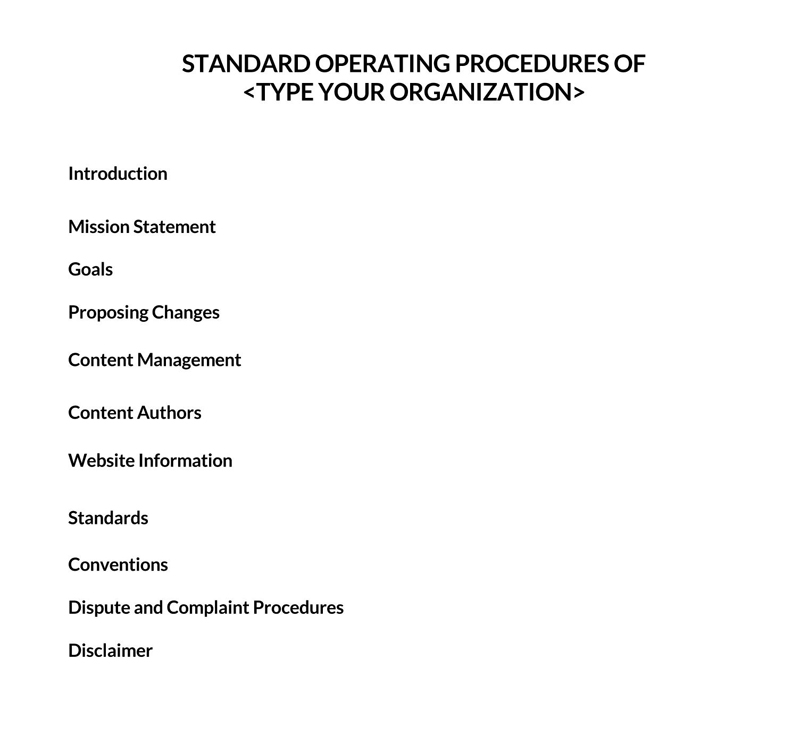
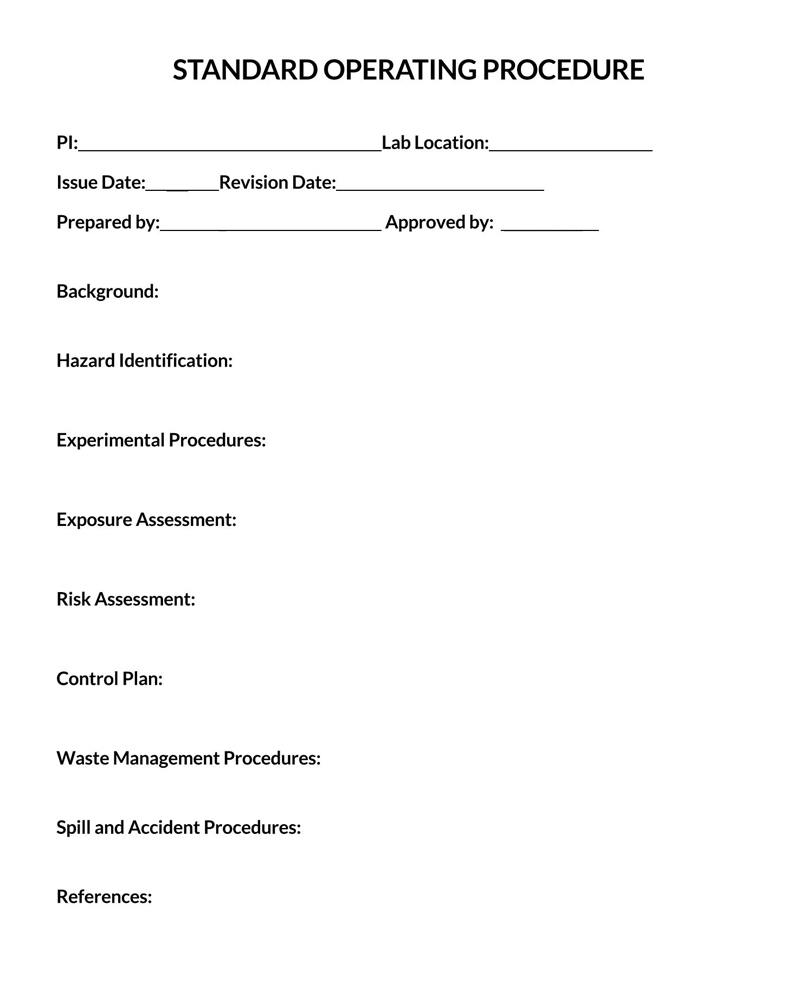
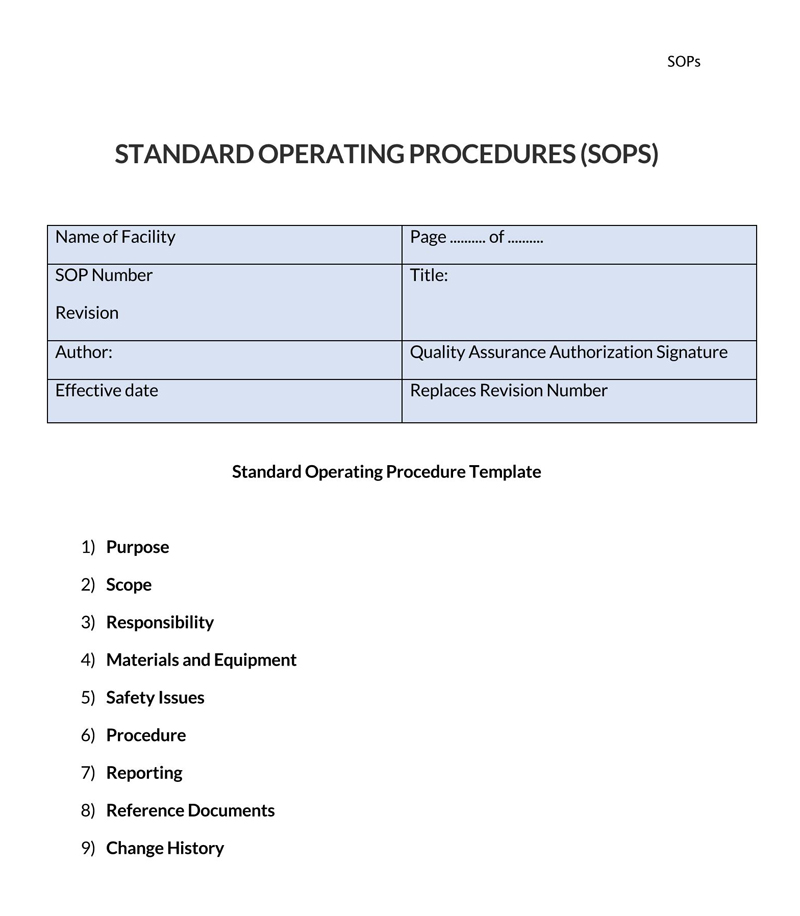
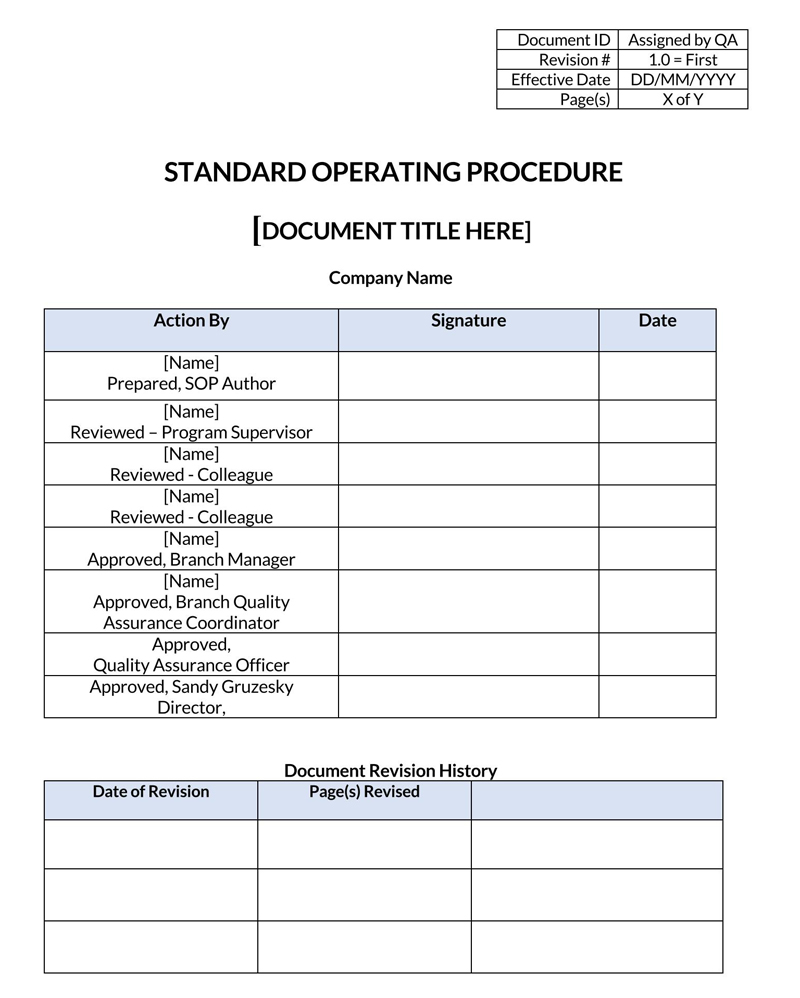
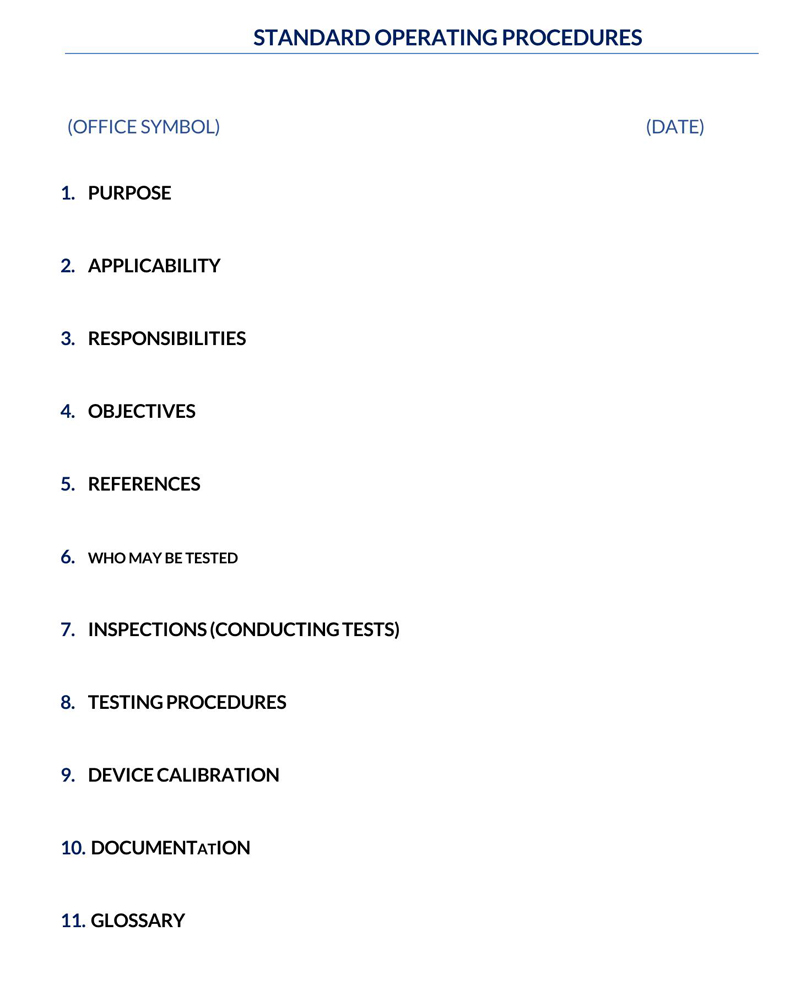
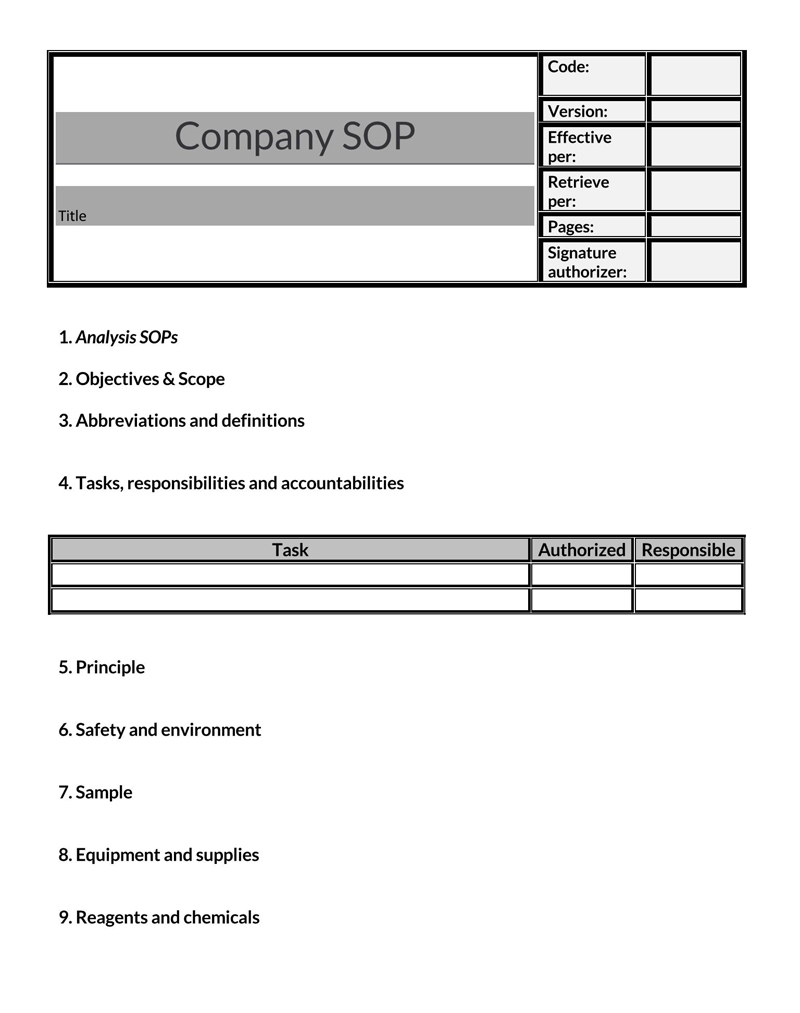
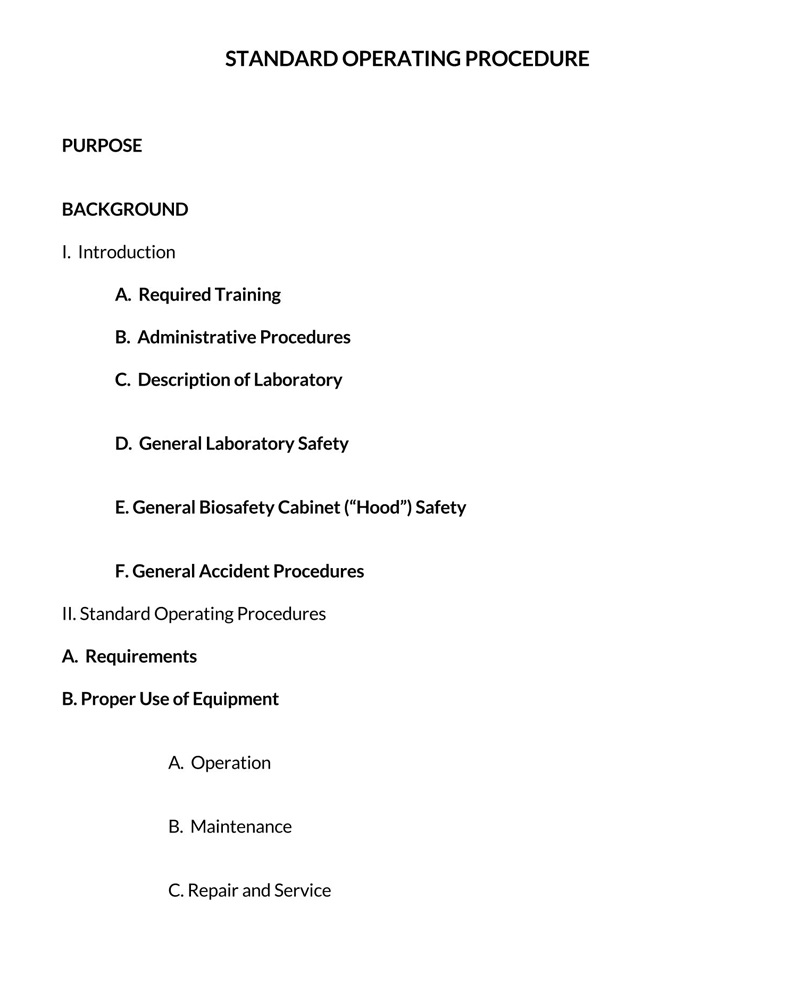
Purpose of the standard operating procedure
Businesses use SOP to mitigate risk by reducing hazards and ensuring uniform quality and production standards. Industries that often deal with hazardous materials or involve potentially dangerous working conditions often use these documents to reduce the chance of harm to employees and third parties.
They are also used as a method of quality control and to create consistent standards. Employees use it to complete complex tasks with several steps and details. They offer processes that must be followed to ensure safety during emergencies. SOPs are frequently used in emergency preparedness planning. They are also essential when it comes to ensuring that all employees know how to proceed in case something unexpected occurs.
Finally, in the customer service and hospitality industries, companies often use templates to guide interactions with customers. They also have an essential role in training new employees and advising current workers of expectations.
Benefits of an SOP
Creating an SOP has several benefits, including decreasing the effort involved in documenting things like regulatory compliance.
Read on for more information about how these documents can help businesses reach their goals.
Prove compliance
A well-designed industry and task-specific SOP can be critical when it comes to demonstrating compliance with regulatory requirements. They can also be used to demonstrate adherence to internal organizational processes and standards.
Reduce miscommunication
SOPs can improve communication between workers, employers, and even customers. They also play a central role in reducing worksite hazards and dealing with safety issues.
Provide checklists
An SOP can be written in such a way as to create a checklist that can be used for quality assurance and performance measurement. They can provide information about both production processes and individual performance metrics.
Streamline workflows
Because SOPs include step-by-step instructions for how to complete a task, they can often speed production processes. Workers tend to make fewer mistakes when following SOPs, which lowers costs and speeds production. They can also be used to identify unnecessary steps and tasks that reduce efficiency.
Serve as a reference
Companies introducing new products or procedures can use extant SOPs as a reference for constructing new guidelines and procedures. Working from an existing document often offers organizational continuity.
Improve quality
The documentation required in an SOP can often be used to defend against lawsuits and accusations of negligence. They ensure that the required information is gathered and retained in a standardized fashion.
Track and measure
Many businesses use SOPs as part of their performance management plans. SOPs can be helpful when it comes to evaluating organizational efficiency.
Streamline onboarding
SOPs are a fantastic way to introduce new employees to their assigned tasks and to provide information about expectations. Many companies build their new employee training programs around SOPs.
Boost accountability
With an SOP in place, it becomes easier to measure performance and intervene when a process, division, or individual is not delivering satisfactory results.
Elements of an SOP
A good SOP includes several pieces of critical information, including details about the document’s purpose, scope, and more.
Below is more information about the five elements of a well-constructed SOP.
- Purpose: A good SOP describes the purpose of the task and links that to specific company goals and objectives. It details the business processes the document addresses, who should consult the SOP and contains user instructions.
- Procedure: The SOP should specify what needs to be done and how to do it. Procedural instructions contain step-by-step instructions for employees to follow when engaged in specific tasks.
- Responsibilities: The document must describe who is responsible for completing specific elements of a task, such as providing updates, and many contain troubleshooting guidelines.
- Scope: SOP templates usually provide information about how they should be used, by whom and under what circumstances.
- Accountability measures: Some companies use SOPs to create accountability measures. They can also be used for performance measurement and management.
Technical SOPs vs. management SOPs
There are two types of SOPs to be aware of, technical and management procedures.
Technical SOPs contain information about how to do specific work-related tasks. Common technical SOPs include standard work orders, automatically triggering preventative maintenance plans and inspection lists and schedules.
These documents concentrate on describing processes and creating implementation guidelines. They often contain information about SOP creation, revision, implementation, management, and review.
How does an SOP work?
An SOP works by notifying all parties involved of an employer’s expectations regarding issues ranging from how particular processes must be completed to production standards. These documents provide an opportunity for employers to standardize and streamline processes and can detail performance information that can be used to improve profitability and ensure quality.
Employers specify which SOPs must be followed when completing specific tasks, and workers complete their assigned work in congruence with those guidelines. Businesses can use SOPs as a baseline for measuring efficiency and as a starting point for adjusting problematic practices. And they can also use these documents as part of comprehensive employee performance management plans.
How to Make a SOP Template?
When writing an SOP template, make sure to consider factors such as the company’s industry, as well as factors such as strategy and scope.
Below we’ve detailed the steps involved in writing an SOP template.
Collect data
The first step when it comes to writing an SOP template is data collection. Businesses need to know details about the procedure or activity to create a useful document. Consult experts in the organization to help describe the steps involved in the process described and standardized in the SOP template. Don’t forget to start thinking about the SOP’s ultimate goal that the document’s purpose will suggest its form.
Choose a format
The SOP template’s format should be based on its purpose. A checklist might be more than sufficient to provide information about emergency procedures, while a more comprehensive manual might be more appropriate for a highly regulated industry. Companies that already have SOPs in place can create new options based on older documents. New businesses can take advantage of online, business-specific templates to quickly get up and running.
Involve employees
Employees are the experts in their jobs and are hands down the best resource available when it comes to writing a well-designed and comprehensive SOP template. Involving employees in the SOP writing process not only improves the quality of the document but also increases employee engagement and retention.
Define your structure and scope
The SOP’s form should match the goal and scope of the project. Simple checklists ensure consistent production, while employee manuals provide a central place for workers to find information about organizational policies.
Small businesses often work with ISO-9001 mini-manuals to ensure regulatory compliance. And ISO-9001 QMS manuals offer businesses guidelines for supplier relationships and more. Larger companies and businesses working in regulated industries often have larger and more complex templates, while small businesses frequently concentrate on slimmed-down checklists.
Be consistent, be clear and reflect reality
Workers need to be able to understand the instructions given in an SOP template, so clear and consistent communication is key. As a result, SOPs should be written with a specific audience in mind. Make sure to maintain the same level of language difficulty and assumptions about base technical knowledge throughout.
note
Resist the temptation to write an idealistic SOP template instead of one that describes and clarifies actual production processes.
Identify target users
Before getting started with the writing process, it is important to determine the document’s intended users. Think about issues such as the intended audience’s familiarity with the process involved and comfort reading complex texts. Complex businesses with multiple production participants should use the SOP template to clarify things such as divisional responsibilities.
Develop your SOP
Now it is time to get started drafting the SOP template. Start by focusing on the five elements of a well-designed SOP — purpose, procedure, scope, responsibilities, and accountability measures. Ensure that all are covered in the document. It’s okay to use an older SOP or a free online template as a starting point.
Add images, video, and links to SOP documents
Consider adding images and videos to your SOP template to improve ease of use. While earlier SOPs relied mostly on written instructions, modern options often include screenshots and video tutorials. Including links makes it easier for employees to access specific information, increasing the likelihood of compliance and business efficiency.
Review, test and edit the process
Have someone unfamiliar with the process involved review the SOP with an eye on the document’s clarity. It is easy to forget to include a step when writing about processes one is familiar with. Because SOPs are often used for training purposes, it is critical to ensure that each step is detailed in writing. Ask the reviewer to pay attention to factors such as language consistency and scope. Consider using the review process to define key production indicators (KPIs) and be willing to edit and make changes.
Assess, optimize, and finalize
Have the document reviewed by several parties, including workers who will be involved in the execution of the specific processes under discussion in the SOP template. Have a manager or supervisor look at the document to ensure it is in compliance with company rules and regulations. Don’t forget to run a risk assessment if the SOP deals with any procedures or activities that run the risk of harming employees or third parties.
Implement the SOP
After the SOP is completed and approved, make it available for employees and ensure that all workers are advised of the new procedures and where to find them. Consider requiring training to introduce the new procedures. After implementation, collect performance metrics and use the information to determine if the SOP template is working as expected. If not, review the document to identify problems that need to be addressed.
Format and Parts of an SOP
SOPs come in several different formats. Below we’ve provided more information about the most common SOP formats and parts.
Format
There are five main SOP template formats, including:
- Checklists: A checklist is the simplest SOP format and is often appropriate for use in small businesses. Managers and business owners can use word-processing software to create process-improving checklists, which can then be distributed to employees in paper or electronic form.
- Step-by-step checklists/procedures: A step-by-step checklist is similar to a simple list but has numbers or bullets that specify the order in which tasks need to be completed. These options are most useful for addressing issues such as computer start-up instructions, restaurant clean-up protocols and providing information about how to properly use company equipment.
- Hierarchical steps: A hierarchical templates of SOP offers an additional level of complexity by including subsections within the lists. Think of these documents as super-charged checklists.
- Flowchart format: Companies often use flowcharts when describing how to address complex situations with variable inputs. Flowcharts tell employees what to do when various situations arise to ensure consistency.
- Full SOPs manuals: Full SOP manuals are used by large businesses or companies involved in highly regulated industries. They contain all of a given company’s policies and procedures.
Parts
Most templates contain two parts, identifying information and the SOP content.
- Identifying information: Include information such as the name of the organization, document number, identity of the SOP’s author, version number, date of implementation and review schedule in the document.
- SOP content: The content section should contain links readers can use to learn more about the process being described as well as information about the purpose and scope of the document. It should also contain links to reference materials and definitions of terms. The content section usually includes step-by-step procedures as well as information about performance measurement criteria. Don’t forget to include a way to keep track of revisions.
How to assign SOPs?
Companies with complex business operations should consider using CMMS software to assign SOPs. These systems are particularly helpful for managers working in large companies or overseeing the operational expansion. Many platforms permit managers to assign SOPs and monitor performance from online applications. Options with mobile apps permit workers to update checklists in real-time and access troubleshooting documents while away from headquarters.
Digital SOPs also make it easier to gather information required for audits and inspections and increase the ease of obtaining metrics for performance measurement. Many businesses find that using digital SOP management software improves efficiency and helps increase production quality.
These platforms can also make it easier for employees to find information about new tasks or procedures and reduce the amount of time that managers spend overseeing basic processes. There are even digital options that streamline and coordinate tasks such as ordering and outsourcing.
Final Thoughts
SOP templates are essential documents for businesses of all sizes. They streamline production processes, describe organizational and task goals, and provide baselines for effective performance measurement and management. Both large and small companies benefit greatly from the increased efficiency and consistency these documents help create.
